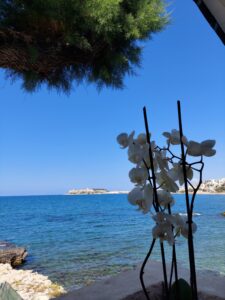By Daniel Christian Wahl, March 30, 2017. Reposted from Design For Sustainability.
[This article is an excerpt from the Worldview Dimension of Gaia Education´s online programme in Design for Sustainability. The course is based on four dimensions plus a design studio. I wrote this course for Gaia Education in 2012 and revised and updated this dimension in 2016.]
“If the soul of our civilization is to be saved we shall have to find new and fuller expression for the great saving unities — the unity of reality in all its range, the unity of life in all its form, the unity of ideas throughout human civilization, and the unity of the human’s spirit with the mysteries of the Cosmos … evolution is nothing but the gradual development and stratification of progressive series of wholes, stretching from the inorganic beginnings to the highest levels of spiritual creation … the old fixed concepts and contours of thought are breaking down … Holism is a process of creative synthesis; the resulting wholes are not static, but dynamic, evolutionary, and creative. …We are out of the bonds of the old crude mechanical ideas, and we enter an altogether new zone of ideas and categories.” — Jan Christian Smuts (in Thomson & Geddes, 1931, pp.1114–1116).
The term holism was coined in 1926 by the South African scientist, philosopher and statesman, Jan Christian Smuts. He was among the first to point out “that the biosphere consists of nothing but wholes that are both partly autonomous and partly dependent upon or subsidiary to greater wholes” (Lemkow, 1995, p.100). In his book Holism and Evolution, Smuts defined the term holism as “the tendency, as in nature, to form connected wholes” (in Brown et al., 2005, p.135).
The Scottish polymath Sir Patrick Geddes, a biologist, sociologist and town planner, called holism “a serious contribution towards the upbuilding of a new constructive worldview.” Smuts and Geddes understood the importance of our worldview in informing and guiding the survival of humanity. In Life — Outlines of a General Biology, Geddes writes: “in the last resort a civilization depends on its general ideas” (Thomson & Geddes, 1931, p.1114).
Arthur Koestler tried to provide a new terminology for holistic thinking that overcomes the dualistic mutually exclusive definition of the words ‘whole’ and ‘part.’ He focussed on the fact that within the whole that contains everything, there are many wholes that are simultaneously parts of larger wholes.
Koestler referred to this property of parts — being both wholes and parts — as the Janus Effect (after the ancient Roman deity Janus, often depicted with two faces looking in opposite directions). He regarded the Janus Effect as “a fundamental characteristic of all sub-wholes in all types of hierarchies.” Koestler argued that “there is no satisfactory word in our vocabulary to refer to these Janus-faced entities” since sub-whole, sub-structure and sub-system did not properly indicate the relationship of simultaneous independence and interdependence. He therefore proposed the term holon, “from the Greek holos = whole, with the suffix on which, as in proton or neutron, suggests a particle or part” (Koestler, 1989, p.48).

















